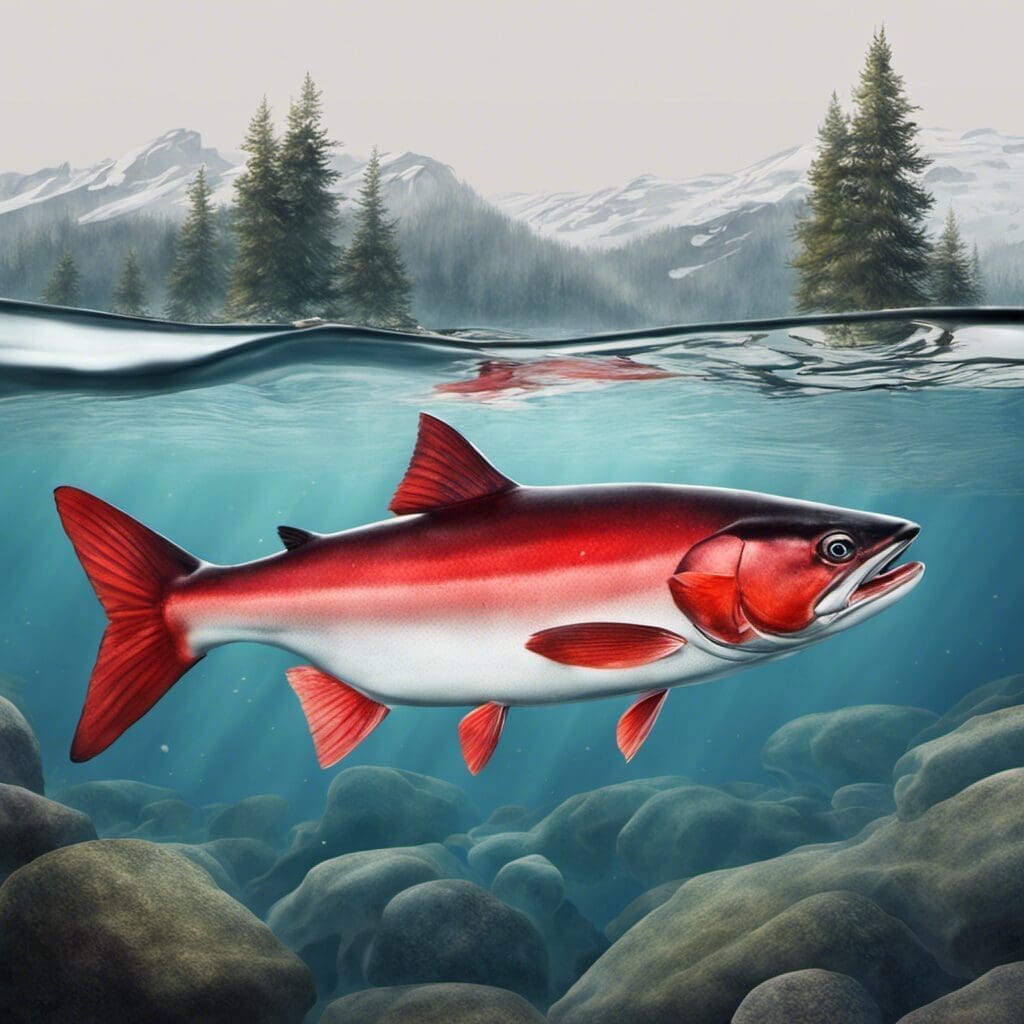Introduction
Belonging to the family Salmonidae, the Sockeye Salmon, scientifically known as Oncorhynchus nerka, is a unique species of salmon. Their vibrant coloration during spawning season and their scrumptious taste have made them one of the world’s most recognized and sought-after fish.
Conservation Status
The sockeye salmon is currently classified as “Least Concern” by the International Union for Conservation of Nature (IUCN), signifying that the sockeye is not facing any immediate threat of extinction. Conservation efforts mainly focus on habitat protection and enhancement, fisheries management, and the restoration of degraded ecosystems.
Statistics
| Parameter | Average | Range |
|---|---|---|
| Length | 60 cm | 45-75cm |
| Weight | 3.6 kg | 2-7kg |
| Average Lifespan | 4-5 years | N/A |
Other notable stats include their fast swimming speed of approx. 26km/hour.
Distribution
Sockeye salmon are distributed along the Pacific coast of North America, ranging from California to Alaska. They are also found in asian regions such as Japan and Russia. These salmon have a unique migration pattern, they are born in fresh water, migrate to the ocean, then return to fresh water to reproduce.
Habitats
These fish thrive in cool, deep, slow-moving waters. During their ocean phase, they prefer temperatures between 5 to 15 degrees Celsius. They are known to inhabit and spawn in rivers and lakes with a depth ranging from 0-75 meters.
When and Where to See
Sockeye Salmon are best seen during the spawning season, which varies by region but generally occurs from June through October. They are often visible from dawn to dusk.
Best Fishing Locations and Tips
Top fishing locations for sockeye salmon include:
- The Fraser River, British Columbia
- The Bristol Bay, Alaska
- The Kenai River, Alaska
- Salmon River, ID, United States
- The Columbia River, Southern British Columbia/Washington State
An excellent tip for anglers is to look for areas where salmon congregate, such as slow-moving pools or deep sections of rivers.
How to Catch
Fly fishing is a popular way to catch sockeye salmon. The best time to catch sockeye salmon is at dawn and dusk during their spawning season. Using brightly colored flies or lures can also increase your success rate.
Identification Guide
Sockeyes are easily distinguishable from other species by their bright red body and greenish colored head during spawning. At sea, they are bluish-black. Shape-wise, they sport the classic salmonoid shape, with a forked tail and pointed snout.
Culinary Details
Sockeye Salmon are deliciously oily, with a bold, nutty flavor. They’re rich in protein and Omega-3 fatty acids. Their firm red flesh is ideal for grilling, smoking, and sushi.
Additional Information
Their behavior is marked by consistent feeding of Zooplanktons and small organisms, followed by a life-long migration before returning to their freshwater birthplaces to spawn. Predators include several bird species, larger fish, and mammals. Human-induced threats include overfishing, habitat destruction, and climate change.
References and Further Reading
For more information about Sockeye Salmon, consider the following resources each opening in a new tab:
- National Oceanic and Atmospheric Administration’s Sockeye Salmon pages
- Alaska Department of Fish and Game’s resources on Sockeye Salmon
- The Wild Salmon Center’s profile on Sockeye Salmon

